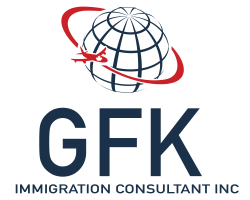Canada’s Immigration Backlog Grows

Canada’s immigration backlog continues to rise as the volume of pending applications continues to grow, despite efforts to streamline processing.
New official IRCC data updated on November 4 indicates that there were a record-breaking nearly 2.5 million applications under processing.
Out of these, nearly 1.1 million applications are exceeding the usual/normal processing time labelled as backlog, marking a notable rise from previous months.
In this article, we breakdown most recent category-wise backlog data, comparative changes, and official future projections.
Table of Contents
Overview of the Immigration Backlog
As of September 30, Canada’s immigration system had a total of 2,450,600 citizenship, permanent residence, and temporary residence applications under processing.
1,097,000 applications are exceeding IRCC’s service standards, falling into backlog.
This represents a 1.73% increase from August 2024 backlog data, signalling challenges in balancing high demand with processing capabilities.
Temporary residency applications have experienced the most significant rise, up 2% month-over-month and a surge of 13.44% as compared to data at the end of July.
The backlog is categorized mainly into citizenship, permanent residency, and temporary residency applications:
| Application Type | Applications in Backlog (September 30, 2024) | Applications in Backlog (August 31, 2024) | Month-on-Month Change |
|---|---|---|---|
| Citizenship | 38,100 | 38,600 | -1.29% |
| Permanent Residency | 305,200 | 300,800 | +1.46% |
| Temporary Residency | 753,700 | 738,900 | +2% |
| Total | 1,097,000 | 1,078,300 | +1.73% |
Backlog continues to improve for citizenship applications with faster processing in 2024.
Applications for temporary residency have increased, possibly as a result of seasonal trends and an increase in applications from international students.
Despite IRCC’s recent policy to limit new entries, the backlog for temporary residents has continued to expand, underscoring the need for additional measures.
Applications Under Processing Within Service Standards
Despite the backlog, a substantial portion of applications is being processed within IRCC’s service standards.
This indicates that while Canada’s immigration system faces delays, it still maintains a level of efficiency for certain applications.
Below is a breakdown of applications meeting service standards:
| Application Type | Within Service Standards (September 30, 2024) | Within Service Standards (August 31, 2024) | Month-on-Month Change |
|---|---|---|---|
| Citizenship | 184,800 | 190,600 | -3.04% |
| Permanent Residency | 510,800 | 504,800 | +1.19% |
| Temporary Residency | 658,000 | 647,100 | +1.68% |
| Total | 1,353,600 | 1,342,500 | +0.83% |
This balance between backlog and in-process applications highlights the Canadian immigration system’s resilience, even as demand continues to grow.
Implications of the Backlog on Canadian Immigration
Canada’s rising backlog has significant implications, affecting not only applicants but also the labour market and society.
Key challenges include:
- Impact on the Labour Market: Delays in processing work permits can strain industries reliant on foreign talent, particularly in sectors like healthcare and technology.
- Increased Wait Times for Families: Delays in family reunification processes add stress for families separated due to immigration procedures.
- Financial and Emotional Strain on Applicants: Applicants awaiting citizenship or permanent residency often experience uncertainty and financial strain, impacting their integration into Canadian society.
Future Projections for the Immigration Backlog
IRCC has outlined future projections for the backlog, considering current processing speeds and demand.
The department aims to process 80% of applications within specified service standards, though this goal is complicated by fluctuating demand and seasonal spikes.
| Category | Projected Backlog At The End Of November 2024 | Projected Backlog At The End Of October 2024 | Actual Backlog (September 2024) | IRCC’s September 2024 Projection |
|---|---|---|---|---|
| Citizenship | 16% | 17% | 17% | 16% |
| Express Entry | 20% | 15% | 17% | 15% |
| Provincial Nominee Program (PNP) | 20% | 20% | 23% | 20% |
| Spousal Sponsorship | 15% | 15% | 15% | 15% |
| Temporary Resident Visas (TRVs) | 59% | 61% | 72% | 60% |
| Study Permits | 37% | 32% | 36% | 30% |
| Work Permits | 44% | 7% | 47% | 14% |
The projections reflect the challenge of managing surges in applications for specific categories, especially study and work permits.
The demand for various temporary resident visas has increased, which has made these categories the most in demand.
Seasonal Variations and Processing Capacity
Seasonal trends also play a role in the fluctuations seen in the backlog. Temporary resident visa (TRV) applications often peak during the fall as students apply for visas for January intake.
Likewise, the start of academic sessions and hiring cycles contribute to increased study and work permit applications.
To address these seasonal peaks, IRCC could consider enhancing processing capacity during high-demand periods or implementing more automation in the application processing system.
Steps Canada Can Take to Manage the Backlog
- Enhanced Processing Capacity: Increasing the number of immigration officers during peak periods could alleviate backlogs.
- Policy Adjustments: Implementing stricter criteria for temporary visas, especially for students, may help control demand.
- Leveraging Technology: Using AI and machine learning to process straightforward applications could expedite processing times and reduce backlogs.
- Stakeholder Engagement: Collaborating with educational institutions, employers, and other stakeholders to manage expectations and streamline specific types of applications may improve overall efficiency.
Previous Monthly IRCC Backlog Updates
Below is a summary of Canada’s backlog trends over the past year, reflecting the dynamic shifts in the backlog as IRCC adapts to changing demand and processing challenges:
| Backlog Update Date | Applications In Backlog |
Total Applications Under Processing |
Backlog Net %Age Change month-on-month |
| September 30, 2024 | 1,097,000 | 2,450,600 | +1.73% |
| August 31, 2024 | 1,078,300 | 2,420,800 | +7.57% |
| July 31, 2024 | 1,002,400 | 2,364,700 | +7.02% |
| June 30, 2024 | 936,600 | 2,292,400 | +6.63% |
| May 31, 2024 | 878,400 | 2,220,000 | -2.08% |
| April 30, 2024 | 897,100 | 2,220,200 | +0.57% |
| March 31, 2024 | 892,000 | 2,212,000 | -0.80% |
| February 29, 2024 | 899,150 | 2,126,200 | -3.32% |
| January 31, 2024 | 930,000 | 2,188,400 | -2.05% |
| December 31, 2023 | 949,500 | 2,221,100 | +6.65% |
| November 30, 2023 | 890,300 | 2,092,700 | -4.93% |
| October 31, 2023 | 936,500 | 2,166,800 | 0.86% |
| September 30, 2023 | 928,500 | 2,194,900 | 9.9% |
Canada’s immigration system is at a crucial juncture. The backlog represents both a challenge and an opportunity to innovate and improve.
For applicants and stakeholders, understanding the intricacies of the backlog, including seasonal effects and demand dynamics, is essential.
As IRCC continues to release regular updates, applicants can better navigate their immigration journey with an informed perspective, trusting that ongoing improvements will address these delays over time.
GFK Immigration
Gboyega Esan RCIC R708591
Phone: +1 (647) 225-0092
#Explore #StudyPermit #CanadaImmigration #PostGraduateOpportunities #GFKImmigration #StayInCanada #Diploma #Canada #Student #internationalStudent #Study #Studypermit #immigrationcanada #canadaimmigration #immigratecanada #canadianimmigration #canadainmigration #immigrationtocanada #movetocanada #liveincanada #workincanada #studyincanada #expressentry
